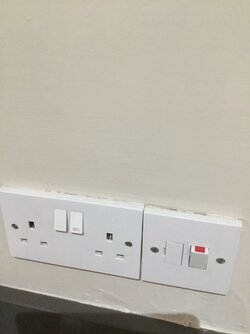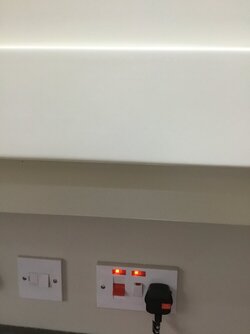S
ScottInnesx
I have recently bought a run down house and I need to run in all my cables for the Kitchen. I was wondering if people could confirm the below is suitable and correct for my kitchen and if they suggest any other way.
2.5mm2 ring circuit 20A (could be 32A)
two double sockets on worktops (kettle 3000W, toaster 1800W)
kitchen extractor 200W
2.5mm2 ring circuit 20A (could be 32A)
washing machine 1200-2400W
tumble dryer 2000-3000W
double socket outside
10mm2 radial circuit 32A
to 45A dp cooker switch then
to CCU then
to double oven (5.8kW)
10mm2 radial circuit 32A
to 45A dp cooker switch then
to CCU then
to induction hob (max power 12kW)
2.5mm2 radial circuit 16A
to 3 gang plate grid switches (20A rated)
to microwave 1000W
to fridge-freezer 500W
to dishwasher 1600-2400W
I have not decided on some of my kitchen appliances so I would like the cable to be suited for the highest rating.
Thanks for any of your help/advice in advance.
2.5mm2 ring circuit 20A (could be 32A)
two double sockets on worktops (kettle 3000W, toaster 1800W)
kitchen extractor 200W
2.5mm2 ring circuit 20A (could be 32A)
washing machine 1200-2400W
tumble dryer 2000-3000W
double socket outside
10mm2 radial circuit 32A
to 45A dp cooker switch then
to CCU then
to double oven (5.8kW)
10mm2 radial circuit 32A
to 45A dp cooker switch then
to CCU then
to induction hob (max power 12kW)
2.5mm2 radial circuit 16A
to 3 gang plate grid switches (20A rated)
to microwave 1000W
to fridge-freezer 500W
to dishwasher 1600-2400W
I have not decided on some of my kitchen appliances so I would like the cable to be suited for the highest rating.
Thanks for any of your help/advice in advance.










